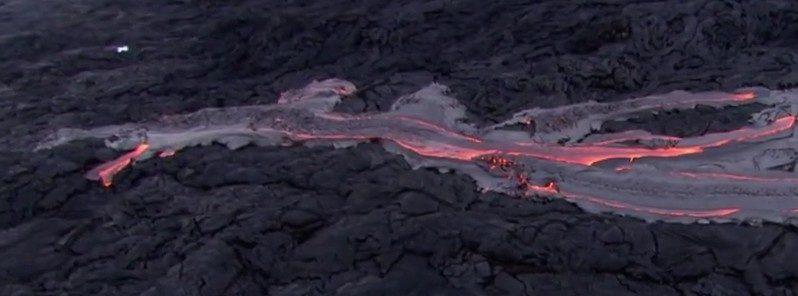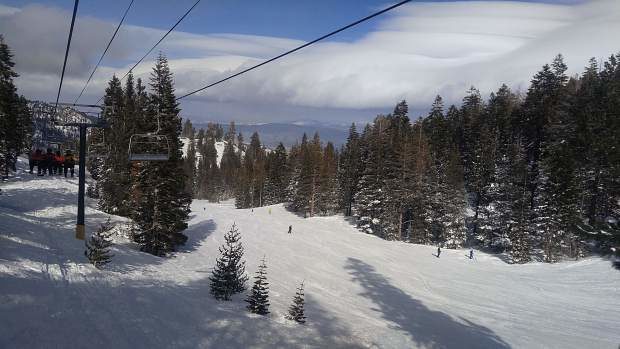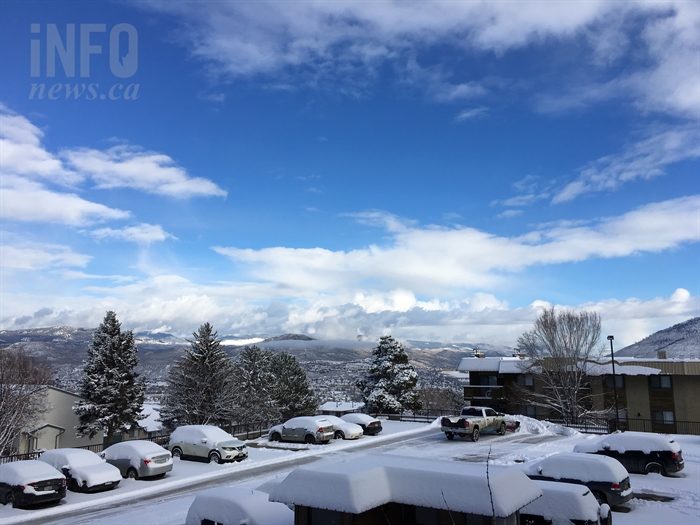
© Tropical Visions Video, Paradise Helicopters / BigIslandNow.com
A huge new outbreak just above the pali to the south of the Kilauea's 61g flow is sending many lava streams downslope, Tropical Visions videographer Mick Kalber and the Paradise Helicopters crew reported after an overflight on March 2, 2017.
"Truly an amazing amount of activity," Kalber said.
Kilauea's current Aviation Color Code is at Orange, Volcano Alert Level is at Watch, AVO reported late March 7.
The episode 61g lava flow from Puʻu ʻŌʻō is entering the ocean at Kamokuna and is feeding surface flows on and above the pali, and on the coastal plain, inland from the ocean entry, but these lava flows pose no threat to nearby communities at this time. The summit is deflating, and the lava lake was 33 m (~108 feet) below the Overlook crater rim on the morning of March 7 (local time).
Summit tremor continues to fluctuate in response to variations in lava lake spattering. Average daily summit sulfur dioxide emission rates were about 3 000 metric tons/day last week, the most recent time when conditions permitted measurements. After a brief increase, seismicity in the upper East Rift Zone has returned to typical levels over the past day, with just a few small earthquakes.


Comment: More earthquakes than usual shook Switzerland last year